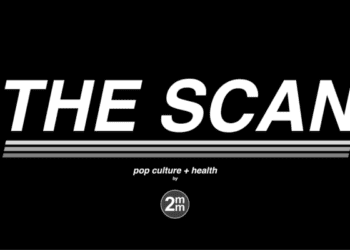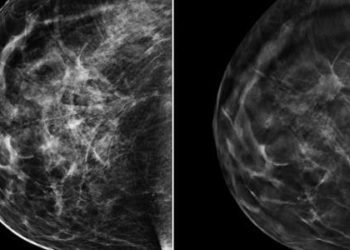2 Minute Medicine Rewind February 4, 2019
Medical scribes are used in variety of clinical settings to complete clerical tasks otherwise done by a clinician. Limited research has been done concerning the effects of scribes on physician productivity in emergency medicine settings. In this randomized controlled trial, data were collected from 589 scribed shifts (5,098 patients) and 3,296 non-scribed shifts (23,838 patients) to study physician productivity (the mean number of patients per hour per doctor, and number of primary consultations) and patient throughput (door-to-doctor times, emergency department length of stay times, etc.) Researchers found that scribes increased physician productivity from 1.13 (95% CI 1.11 to 1.17) to 1.31 (95% CI 1.25 to 1.38) patients per hour per doctor, representing a 15.9% increase (p<0.001) as compared to physicians without scribes. Primary consultations, defined as consultations in which the physician was the patient’s main physician, also increased, from 0.83 (95% CI 0.81 to 0.85) to 1.04 (95% CI 0.98 to 1.11), representing a 25.6% increase (p<0.001). Moreover, the median emergency department length of stay was shorter in the scribed group (173 minutes, IQR 96 minutes to 208 minutes) than in the non-scribed group (192 minutes, IQR 108 minutes to 311 minutes, p<0.001). There was no difference in the median doctor-to-door time between the scribed and non-scribed groups. There were 16 patient safety incidents that involved scribes; the most common error category was patient identification. In 50% of these incidents, the scribe played an active role in preventing a medical error. This study was limited by the fact that junior doctors were excluded, and that the study was conducted in a single Australian state. Nevertheless, this is the first randomized, prospective study of the use of scribes in an emergency department setting. Results from the study show that the use of scribes may increase physician productivity and decrease the length of emergency department stays.
Breast-conserving surgery or mastectomy followed by radiotherapy is commonly used in the treatment of early-stage breast cancer. There is growing interest in delivering postmastectomy radiotherapy with hypofractionated schedules to reduce cost and enable the treatment of more patients. However, the efficacy and safety of this approach has not yet been compared to that of conventional postmastectomy radiotherapy in a randomized study. In this randomized controlled non-inferiority study, 820 patients with breast cancer who had undergone mastectomy and had at least four positive lymph nodes, or had tumor stage of T3-4 disease, were assigned to receive conventional fractionated radiotherapy or hypofractionated radiotherapy. The primary outcome was locoregional recurrence, defined as disease recurrence in the ipsilateral chest wall or regional lymph nodes from the time of randomization to the end of follow-up. Conventional fractionated radiotherapy consisted of postmastectomy radiotherapy at 50 Gy in 25 fractions over 5 weeks, and hypofractionated radiotherapy consisted of postmastectomy radiotherapy at 43.5 Gy in 15 fractions over 3 weeks. Patients received either adjuvant (75% of patients) or neoadjuvant (25% of patients) standard chemotherapy. The median follow-up was 58.5 months (IQR 39.2 months to 81.8 months). Researchers found that hypofractionated radiotherapy was noninferior to conventional fractionated radiotherapy in the 5-year cumulative incidence of locoregional recurrence (8.3% vs. 8.1% respectively, HR 1.10, 90% CI 0.72 to 1.69, p<0.0001 for non-inferiority). There was no difference in overall survival (OS) or disease-free survival (DFS) between the groups (HR 1.13 for OS, 95% CI 0.78 to 1.62, p=0.526; HR 0.88 for DFS, 95% CI 0.67 to 1.16, p=0.429). Grade 3 acute skin toxicity was less frequent in the hypofractionated radiotherapy group than in the conventional fractionated radiotherapy group (3% vs. 8% respectively, p<0.0001). There were no other significant differences between groups in the incidence of acute or late toxicities. However, the median follow-up of 5 years in this study was insufficient to assess for all potential late toxicities. In summary, this study supports the use of hypofractionated postmastectomy radiotherapy over conventional mastectomy radiotherapy for patients with high-risk breast cancer however, longer follow-up is needed to monitor for potential late toxicities.
Several recently published guidelines regarding the treatment of C. difficile infection recommend vancomycin as first-line antibiotic treatment. However, given the recent increase in severity and frequency of C. difficile infections, there is a critical need for novel C. difficile therapies. Cadazolid is a novel quinoxolidinone antibiotic that acts in the intestinal lumen by inhibiting bacterial protein synthesis, and was shown to have similar efficacy to vancomycin in the treatment of C. difficile in a phase 2 trial; a phase 3 trial has not yet been conducted. In two identically designed, phase 3, randomized, controlled non-inferiority studies (IMPACT 1 and IMPACT 2), a total of 1,263 patients with mild-to-moderate or severe C. difficile infection were assigned to receive cadazolid or vancomycin to study clinical cure, defined as the resolution of diarrhea for two days after the end of treatment with no additional treatment for C. difficile infection. In both trials, patients in the vancomycin group had a higher percentage of epidemic strains. Based on a modified intention-to-treat population, cadazolid was found to be noninferior to vancomycin in the incidence of clinical cure in IMPACT 1 (84% in the cadazolid group vs. 85% in the vancomycin group, treatment difference -1.4, 95% CI -7.2 to 4.3). However, cadazolid was not noninferior to vancomycin in the incidence of clinical cure in IMPACT 2 (81% in the cadazolid group vs. 86% in the vancomycin group, treatment difference -4.7, 95% CI -10.7 to 1.3). In both studies, cadazolid had a similar safety profile to vancomycin. Overall, non-inferiority of cadazolid compared with vancomycin for C. difficile infection was only shown in one of two studies. Further investigation of cadazolid for the treatment of C. difficile infections will likely not be pursued.
Surgeons are often presented with the challenge of determining the appropriate management for adhesive small bowel obstruction (aSBO). While non-operative management leaves the responsible adhesions in place, operative management may create new adhesions. Previous studies have suggested that nonoperative management of aSBO may be associated with a greater risk of recurrence, but they have been limited by heterogeneity of the patient cohort. In this propensity-matched retrospective cohort study, 27,904 patients admitted to the hospital with a primary diagnosis of adhesive or unspecified intestinal obstruction (index admission) were studied to compare the cumulative incidence of recurrence of aSBO between patients who underwent operative management at the index admission compared to patients who underwent nonoperative management. Overall, 22.2% of patients underwent operative management at their index admission. These patients were slightly younger (mean age 60.2 years vs. 61.5 years), more likely to be female (57.8% vs. 49.2%), and had fewer comorbidities (low burden, 6.2% vs. 4.2%) than patients who received nonoperative management. Researchers found that patients who underwent operative management at the index admission had a lower risk of recurrence than those undergoing nonoperative management after propensity matching (13.0% vs. 21.3% respectively, HR 0.62, 95% CI 0.56 to 0.68, p<0.001). Furthermore, regardless of the method used to manage previous episodes, patients who underwent operative management during their second and third episodes of aSBO had a significantly lower risk of subsequent recurrence than those who underwent nonoperative management (relative risk reduction [RRR] 51% for second episode, 95% CI 30% to 61%, RRR 55% for third episode, 95% CI 35% to 70%). Importantly, this study suggests that surgical intervention may decrease, not increase, the risk of recurrent aSBO.
Previous work has suggested that healthcare interventions on weekends may be associated with increased mortality, but findings have been inconsistent. In this matched cohort study, 318,202 adult patients admitted to acute care hospitals who underwent a non-cardiac, non-obstetric surgical procedures were studied to compare all-cause mortality within 30 days of hospital admission in patients who were admitted on a weekend versus those who were admitted on a weekday. The weekend was defined as Saturday or Sunday, and weekdays included Tuesday to Thursday. Only patients who had a surgery during the same weekend or week of admission were eligible. Patients with weekend admissions were classified by day of surgery and matched directly (1:1) to patients with a weekday admission and surgery. Patients admitted on weekends were more likely to be male, to be admitted to a non-teaching hospital, and to have a longer interval between hospital admission and surgery (all p<0.001). Among weekend admissions, patients who had their surgery performed on the same weekend were more likely to be younger, be female, be admitted to a hospital urgently, live in a lower income neighborhood, have a lower resource utilization band score (high scores are associated with higher overall morbidity and resource use), and have a higher Charlson Comorbidity Index. After adjusting for confounding factors, researchers found that there was an increased odds of 30-day all-cause mortality for patients admitted on weekends compared to those admitted on weekdays (2.6% vs. 2.5%, OR 1.05, 95% CI 1.00 to 1.11, p=0.03). When admissions were classified by the day of surgery (weekend versus weekday), there was no difference in the odds of 30-day all-cause mortality for patients who were had surgery on the weekend compared with patients who had surgery on a subsequent weekday (2.3% vs. 3.0% respectively, OR 1.04, 95% CI 0.97 to 1.11, p=0.3). Elective admissions on weekends had an increased risk of death when surgery was performed on the weekend (OR 3.30, 95% CI 1.98 to 5.49, p<0.001) or on a subsequent weekday (OR 2.70, 95% CI 1.81 to 4.03, p<0.001) when compared to elective admissions on weekdays. An important limitation of the study is the lack of data regarding the reason for admission. Overall, this study suggests that patients who are admitted on weekends and subsequently undergo surgery are at an increased risk of 30-day all-cause mortality, although there is significant heterogeneity in outcomes depending on the urgency of the surgery and when the surgery was performed.
Image: PD
©2019 2 Minute Medicine, Inc. All rights reserved. No works may be reproduced without expressed written consent from 2 Minute Medicine, Inc. Inquire about licensing here. No article should be construed as medical advice and is not intended as such by the authors or by 2 Minute Medicine, Inc.







